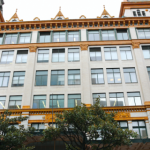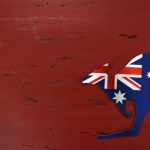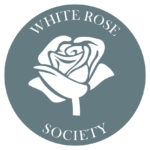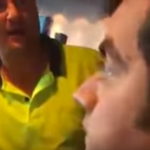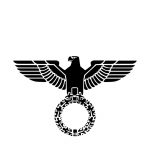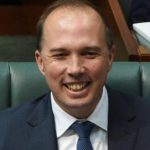White Australia Continues to Hijack Television News, Report Finds

Flipping through Australian free-to-air television channels on a weeknight during the 6 to 7.30 pm timeslot, a viewer is confronted by news and current affairs programming that involves an overwhelming majority of white talking heads.
Australia is a nation that’s often held up as an example of a successful multicultural society, with 2016 Census data revealing a population comprised of 58 percent Anglo-Celtic people, 18 percent Europeans, 21 percent non-Europeans and 3 percent First Nations peoples.
However, watching the nightly news or morning breakfast shows, one might be forgiven for thinking the White Australia policy is still in operation.
Indeed, a just released study initiated by Media Diversity Australia (MDA) outlines that not only are those telling the stories on the screen white, but all of those directing free-to-air national television news programming are Anglo Celtic males.
Involving researchers from four universities and a number of media monitoring companies, the Who Gets to Tell Australian Stories report also finds that looking at the data from comparable nations, Australia is lagging behind when it comes to cultural diversity in media.
A whitewash
The MDA report provides a two week snapshot of Australian free-to-air news and current affairs programming from June last year. The study found that from this selection 75 percent of presenters, commentators and reporters had Anglo Celtic backgrounds.
In June this year, 300 television journalists completed a survey, which saw 70 percent of them rate cultural diverse representation in the media as poor, while 77 percent of respondents from cultural diverse backgrounds saw this as being a barrier to moving forward in their career.
Perhaps the most stark finding was that 100 percent of free-to-air television news directors were Anglo Celtic men. And this was accompanied by a statistic revealing that of 39 television board members, only one was a First Nations person, with three having a non-European background.
The research further involved interviewing a range of senior news and current affairs heads, which found that while most of them recognised that their outlet failed to reflect the cultural diversity of viewers, they were somewhat ambivalent as to taking steps to address this.
The authors also note that despite the 1991 National Inquiry Into Racist Violence having recommended addressing the lack of diversity in programming as a way of sensitising the media to the concerns of unrepresented groups, little has been done over the decades that followed.
Onscreen presence
The two weeks’ worth of programming the researchers put under the microscope consisted of 81 news programs and 19,000 news and current affairs items that were broadcast over 1 to 14 June 2019. It included all major network news and current affairs but didn’t involve NITV programming.
Researchers found that five out of eight states and territories featured not a single First Nations presenter, commentator or reporter over that two week period, while three jurisdictions featured no onscreen presence of individuals with a non-European background.
Looking at specific free-to-air channels, the whitest was Channel 9 with 87.8 percent of presenting by Anglo Celts. SBS ranked highest in terms of non-Europeans with 76.6 percent of presenters being so. And as for First Nations presenters, Channel 10 had the highest number with 5.4 percent.
Another confronting finding was that within regional television news programming there were no First Nations presenters, commentators or reporters, and there was only one non-European person featured in onscreen news telling.
Then there’s breakfast show news programming, which our nation seems to favour. And the report found that cultural diversity is “rendered more or less invisible in this aspect of the daily news agenda”.
The board room
The report also perused the members of television networks, national news directors, state editors and bureau chiefs. And while SBS has a gender and culturally diverse board, the rest of the industry was found to be lacking in this regard.
In July this year, every national news director was an Anglo Celtic male, while 32 out of 39 of the most senior news management roles were held by Anglo Celtic people, of which 23 were men.
The research further involved in-depth interviews with nine senior news and current affairs leaders from all five major networks. This found that the leaders had a poor understanding of what cultural diversity is, which then led to barriers to addressing it.
Most of these heads of news believed their networks were becoming increasingly culturally diverse, when they’re not. Addressing stereotyping is a low priority for them, while overall, those leading television news aren’t proactively tackling the lack of cultural diversity in their workplaces.
Comparable nations
Unlike this country, the US and the UK have been actively collating data and working to improve the cultural diversity in their newsrooms and broadcasts for a number of decades. And while those involved believe it’s moving too slowly, they continue to implement measures to improve it.
The UK’s Office of Communications produces annual reports on the cultural diversity at major broadcasters based on collected data.
While in the States, the News Leaders Association has been at it since 1978. It noted this year that over the last three decades the situation has improved but still doesn’t reflect the diversity of the general population.
“We lag significantly behind comparable Western democracies,” the Australian report authors conclude. And they recommend this nation begins collecting data, establishing targets, recognising the economic benefits of cultural diversity, and then actively pursuing it in recruitment.
As the sunsets on Sunrise
The most obvious example of the damage this lack of cultural diversity in news and current affairs programming can lead to is the March 2018 Channel 7 Sunrise segment that involved three white presenters discussing the adoption of First Nations children.
Commentator Prue MacSween went as far as to call for another Stolen Generation. And not only did having a whole white panel allow for such comments, but an Aboriginal panellist could have told Pru that there continues to be high numbers of First Nations children removed from their families today.
Gadigal elder Aunty Rhonda Dixon-Grovenor is now spearheading a racial vilification action against Sunrise host Samantha Armytage and Prue MacSween for their part in the racist segment.
“It’s important to pursue this matter because those suggestions by Prue and Samantha were that Aboriginal children would be better off with white people, and that’s part of the ongoing stolen generation,” Aunty Rhonda told Sydney Criminal Lawyers in July.
“This has been going on since colonisation.”


